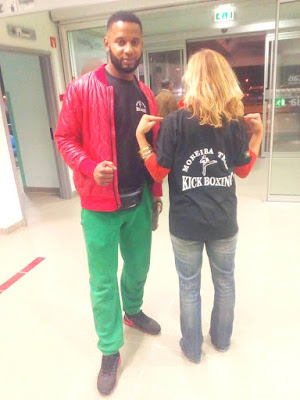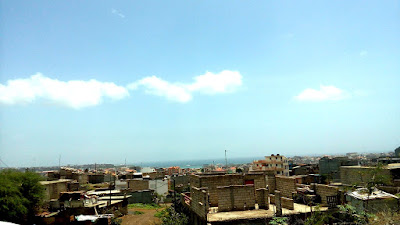Peru - Arequipa / Puno / Lago Titicaca- Oct 2017
For a English version please scroll down
Viajar, para mim, é uma entrega à vida e o permitir-me também cruzar com pessoas que, por uma razão ou por outra, passam a fazer parte dela, ainda que por pouco tempo. É a partilha de experiências, conversas, momentos em lugares diferentes, que nos vão transformando. A mim e, quero crer, aos outros.
Foi por essa razão que quando regressei a Arequipa (vinda do Cañon del Colca), apesar de estoirada, não me fui deitar cedo. O meu anfitrião Wilson iria viajar a trabalho no dia seguinte e seria assim a nossa despedida. Estava acompanhado pelo Jonathan (o seu sobrinho muito querido) e pela Rosário (uma pessoa dinâmica, empreendedora e muito boa onda). Fiquei surpreendida pelos conhecimentos sobre propriedades de plantas e outros produtos naturais desta rapariga. A minha intuição é que esta senhora vai fazer a diferença nesta área.
Acompanhados de chá e de música tradicional peruana, passámos a noite em amena cavaqueira e gargalhadas.
No dia seguinte, encontrei-me com o Kev (o meu amigo inglês que conheci no Colca), fomos dar um passeio e conhecer a Casa del Moral, um exemplo muito interessante de uma casa colonial.
Eu confesso que continuava cansada. Esta questão da altitude provocava-me dores de cabeça e cansaço. Estava a cerca de 2400m de altitude e Puno fica a cerca de 3800m. O Wilson tinha me dito que seria uma boa aposta fazer a viagem durante o dia, pelas paisagens. Decidi descansar e preparar-me para a jornada que me esperava.
Foi o melhor que fiz porque a viagem, ainda que longa (cerca de 6h e meia), oferece umas paisagens deslumbrantes.
Cheguei ao final da tarde a tempo de procurar um hostel para dormir e dar uma volta pelo centro. A cidade é vibrante e as ruas estavam transformadas em mercados coloridos, ao som de cumbias e de pregões dos seus vendedores. A pressão na cabeça tornou-se mesmo desconfortável e respirar ainda mais difícil. Acabei por comprar numa farmácia, alguns comprimidos para o mal da altitude e constatar que o chá de coca e de muña fazem efectivamente milagres 😉
No dia seguinte, encontrei-me com o Kev (o meu amigo inglês que conheci no Colca), fomos dar um passeio e conhecer a Casa del Moral, um exemplo muito interessante de uma casa colonial.
Eu confesso que continuava cansada. Esta questão da altitude provocava-me dores de cabeça e cansaço. Estava a cerca de 2400m de altitude e Puno fica a cerca de 3800m. O Wilson tinha me dito que seria uma boa aposta fazer a viagem durante o dia, pelas paisagens. Decidi descansar e preparar-me para a jornada que me esperava.
Foi o melhor que fiz porque a viagem, ainda que longa (cerca de 6h e meia), oferece umas paisagens deslumbrantes.
Cheguei ao final da tarde a tempo de procurar um hostel para dormir e dar uma volta pelo centro. A cidade é vibrante e as ruas estavam transformadas em mercados coloridos, ao som de cumbias e de pregões dos seus vendedores. A pressão na cabeça tornou-se mesmo desconfortável e respirar ainda mais difícil. Acabei por comprar numa farmácia, alguns comprimidos para o mal da altitude e constatar que o chá de coca e de muña fazem efectivamente milagres 😉
Mas o que atrai Puno é o facto de ser a grande cidade que serve o Lago Titicaca – o lago navegável mais alto do mundo. Com cerca de 8300m2, este lago é de facto impressionante!
Aqui, o turismo vivencial é uma experiência obrigatória e uma excelente forma de conhecer um pouco mais da cultura das comunidades que vivem neste lago.
Eu tinha as dicas de Wilson e a minha ideia era apanhar um barco de transporte público para ficar em casa de Beatriz e Osvaldo, um casal a viver na ilha de Amantani. Mas o que aconteceu foi sair muito cedo e quando cheguei ao porto, enganei-me e apanhei um barco de uma agência. Só me apercebi quando cheguei a Uros, um conjunto de ilhas flutuantes construídas sobre palha. Assumo que fiquei inicialmente um pouco desconcertada. Estava a tentar fugir às tours turísticas... Mas o meu lema é que a vida raramente ocorre como se planeia, por isso, foi expectante que prossegui o meu dia. E realmente é interessante ver como esta comunidade vive e como se organiza.
Cheguei à hora do almoço a Amantani e a Sra. Beatriz estava à minha espera no porto. Fiz um passeio lindo até sua casa e a primeira sensação que tive foi de uma enorme tranquilidade. Tão bom! Não fosse não ter rede e não conseguir avisar o pessoal do hostel (onde estavam as minhas coisas) e tinha ficado mais um dia. Beatriz preparou-me o almoço e depois mostrou-me o trabalho que faz. Vestiu-me com roupas típicas e aconselhou-me a visitar o templo de Pachatata.
Eu obedeci às indicações percebendo que era algo organizado para todo turista que visita a ilha. Ainda assim, foi exactamente a capacidade de organização das comunidades destas ilhas que mais me impressionou. Eles organizam-se e tomam decisões em nome de todos. Ajudam-se uns aos outros, plantam em conjunto e as verbas que conseguem são divididas por todos. Há um espírito de solidariedade e uma ligação à natureza que chama a atenção e pergunto-me se a tranquilidade que senti não virá daí.
English version
Travel, for me, is to surrender to life and to allow myself to cross with people who, for one reason or another, become part of it, even for a short time. It is the sharing of experiences, conversations, moments in different places, that transform us - me and, I want to believe, the others too.
Despite being supertired, it was for this reason that when I returned to Arequipa (coming from Canyon del Colca), I did not go to bed early. Wilson, my host, was traveling to work the next day and that would be our farewell. He was accompanied by Jonathan (his beloved nephew) and Rosario (a dynamic, enterprising and very good person). I was surprised by the knowledge about plant properties and other natural products of this girl. My intuition is that this lady will make a difference in this area.
Accompanied by tea and traditional Peruvian music, we spent the night in pleasant conversation, laughing.
The next day, I met up with Kev (my English friend I met in Colca), we went for a walk and got to know Casa del Moral, a very interesting example of a colonial house.
I confess I was still tired. This issue about altitude caused me headaches and fatigue. It was about 2400m high and Puno is about 3800m. Wilson had told me that it would be a good bet to make the trip during the day, for the scenery. I decided to rest for the remainder of the day and prepare for the journey that awaited me.
It a good decision because the trip, although long (about 6 hours and half), offers stunning scenery. I arrived late in the afternoon just in time to look for a hostel to sleep in and take a walk around the center.
The city is vibrant and the streets were transformed into colorful markets, to the sound of cumbias and bargains of its sellers.
The pressure on my head had become really uncomfortable and breathing even harder. I ended up buying some pills for altitude sickness and finding that coca and muña tea actually work miracles😉
But the attraction of Puno is that it is a great city that serves Lake Titicaca - the highest navigable lake in the world. With an area of 8300m2, this lake is indeed impressive!
Here the experiential tourism is an obligatory experience and a great way to get to know more about the culture of the communities that live in this lake.
I had Wilson's tips and my idea was to catch a public transport boat to stay with Beatriz and Osvaldo, a couple living on the island of Amantani. But what happened was i left very early, and when I arrived at the port, I was mistaken and I caught a boat of an agency. I only realized when I arrived at Uros, a group of floating islands built on straw. I assume I was initially a bit puzzled. I was trying to escape the tourist tours ... But my motto is that life rarely occurs as planned, so it was expected that I continued my day. And it really is interesting to see how this community lives and how it is organized.
I arrived at lunchtime at Amantani and Mrs. Beatriz was waiting for me at the port. I took a beautiful walk to their house and the first sensation I had was a great tranquility. So good! I would have stayed another day if it I had a signal. I could not talk the hostel staff (where my stuff was).
Beatriz prepared a beautiful lunch for me and then showed me the work she does. She dressed me in typical clothes and advised me to visit the temple of Pachatata. I obeyed the advice, realizing that it was something organized for every tourist visiting the island. Still, it was the organizational capacity of the communities on the lake islands that impressed me the most. They organize and make decisions on behalf of everyone. They help each other, they plant together, and the sums they get are divided with everyone. There is a spirit of solidarity and a connection to nature that drew my attention and I wonder if the tranquility I felt will not come from there (reviewed by Kev Hawken).









Comentários
Enviar um comentário